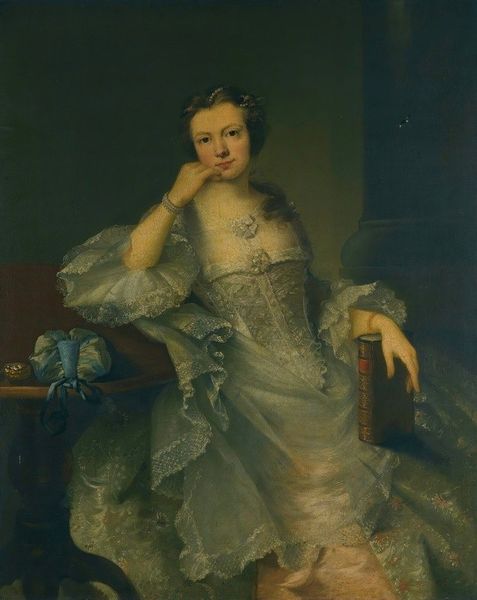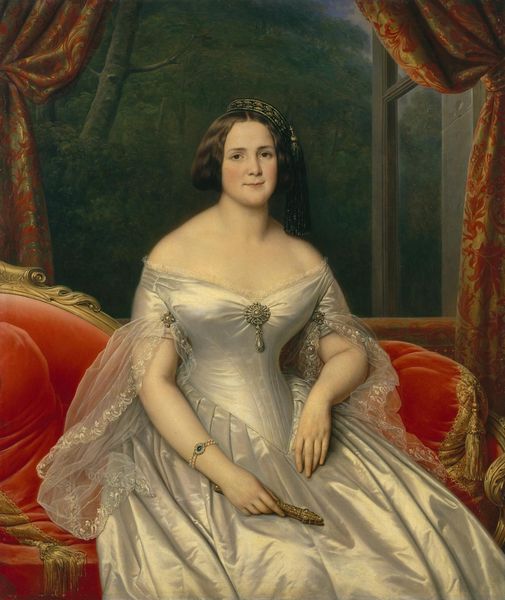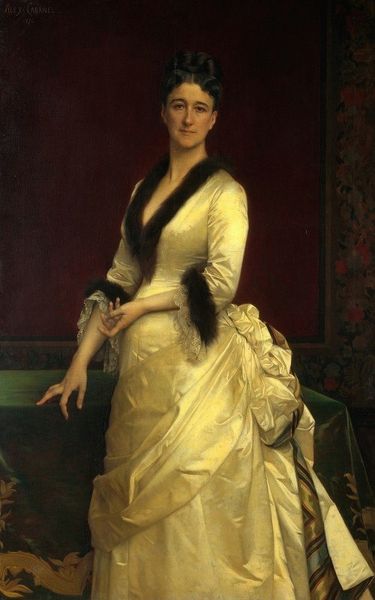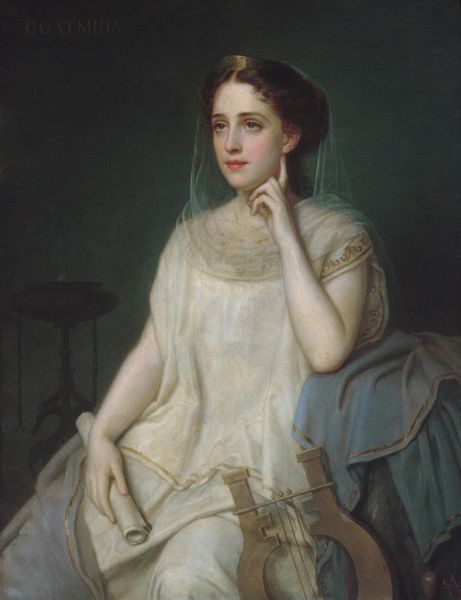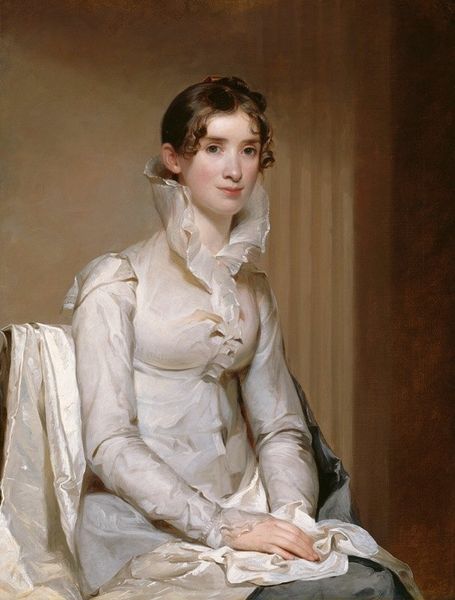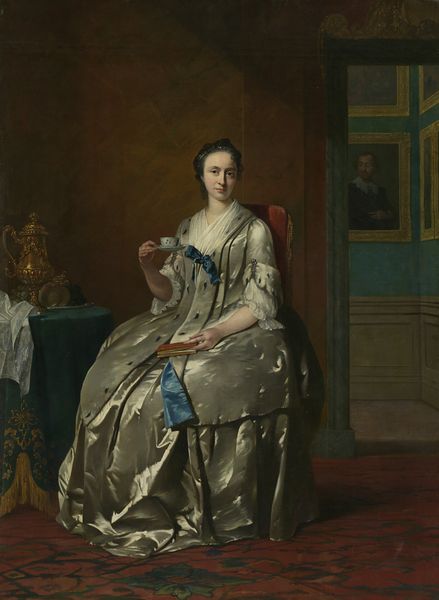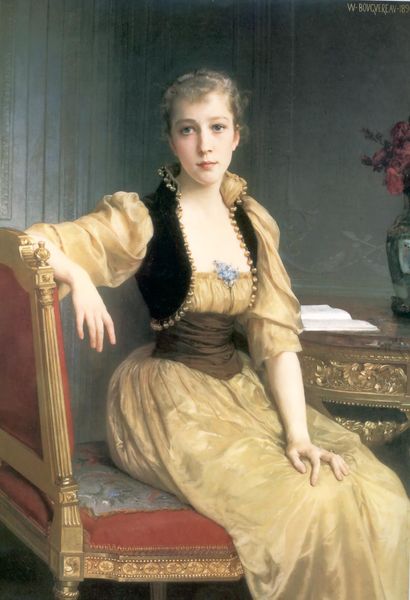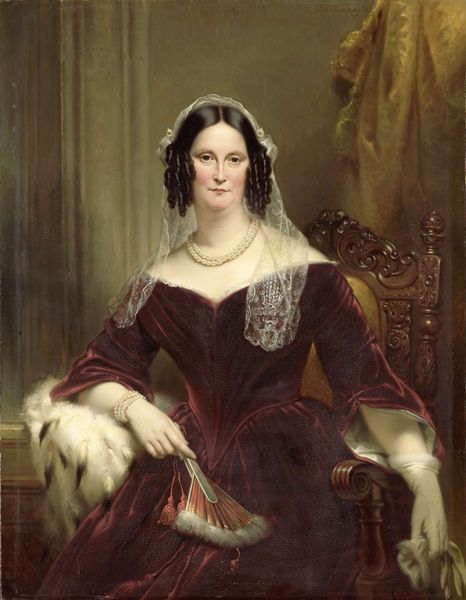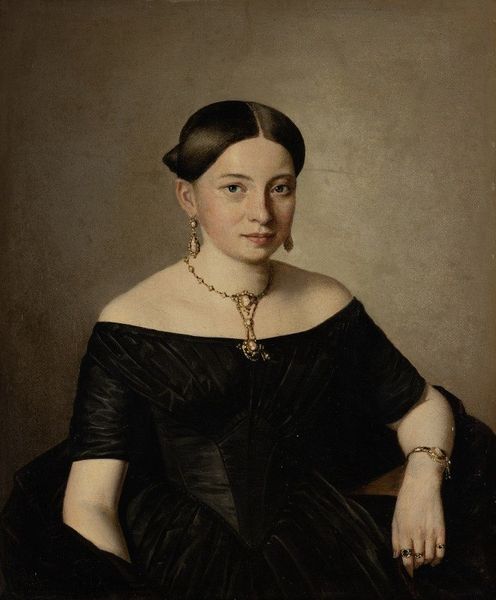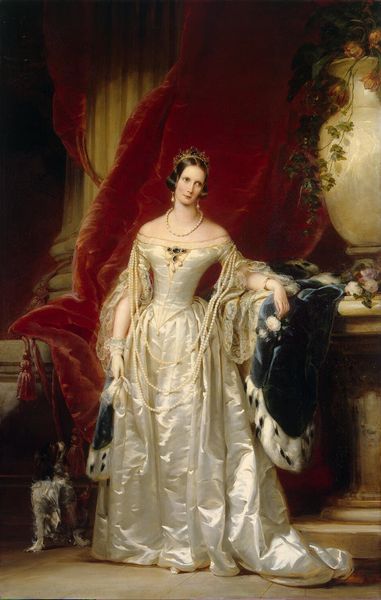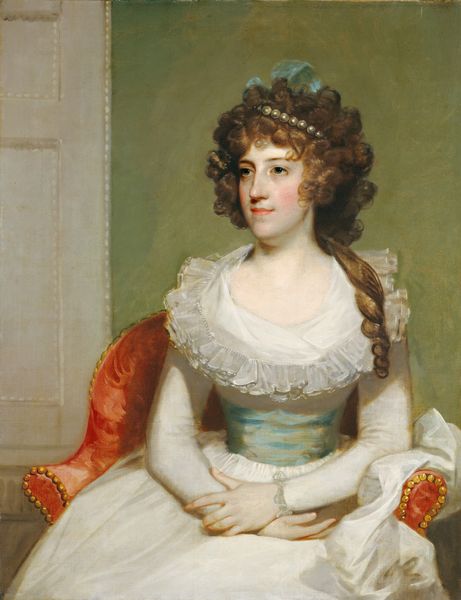
painting, oil-paint
#
portrait
#
painting
#
oil-paint
#
romanticism
#
genre-painting
#
realism
Copyright: Public domain
Curator: It’s difficult to ignore the overwhelming sense of melancholy that washes over me when viewing this oil on canvas by Charles de Steuben titled "Julia Stroganova," created in 1848. What’s your initial reaction? Editor: The painting strikes me as a carefully orchestrated composition in greys and whites, almost monochromatic but for the burst of ultramarine in the chair’s upholstery. There is an insistent horizontal emphasis in the dress. Curator: Indeed. The layering of the whites mimics the many layers of her social standing. Beyond being merely a portrait, I perceive this as a loaded symbol, referencing Julia's status as part of the wealthy Russian Stroganov family. Her gaze doesn't meet ours; instead, she looks inward, embodying Romanticism's focus on interiority. Do you see that connection to the Romantic movement here? Editor: Absolutely. Structurally, the muted palette throws emphasis onto textural nuance—the subtle variations in lace, pearls, and the sheen of the oil paint create a delicate interplay. Observe, for instance, the hard edges of the small jewelry box placed behind her. It interrupts what could be perceived as total fluidity in the subject's white dress. Curator: Yes, her very composure tells a story. Consider the placement of the letterbox—positioned beside her, possibly full of love letters or business correspondence, hinting at her complex role within 19th-century society, trapped by both wealth and expectation. This becomes more clear by her downward glance, burdened with heavy social convention. Editor: I notice the artist employs chiaroscuro subtly to further divide the painting, thus using dark backgrounds to augment the figure. Look carefully how he defines forms in the face and fabric of the dress in what is almost a study of tonality. Curator: True, and let's not overlook the symbolism behind the adornments she wears, such as the layers of pearls. These signify purity and wealth but could also suggest emotional confinement. As if she were encased by social pressure. Editor: I’m left contemplating the balance between restraint and flamboyance that defines Steuben’s construction of forms, and how this delicate equilibrium reveals details otherwise easily passed by. Curator: "Julia Stroganova" reminds us that even seemingly straightforward portraits hold layers of symbolic meanings, and of course, emotional resonance. Editor: Its somber beauty underscores the richness that close visual study brings, regardless of period and cultural context.
Comments
No comments
Be the first to comment and join the conversation on the ultimate creative platform.
